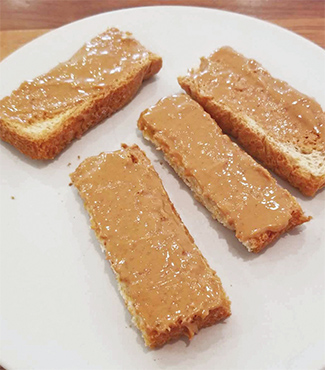Meat and alternatives
![]() Meat and alternatives are rich in iron. They are among the first foods you should introduce to your baby.
Meat and alternatives are rich in iron. They are among the first foods you should introduce to your baby.
This food group is made up of foods that are rich in proteins: meat, poultry, fish, and alternatives such as legumes, tofu, and eggs. Since they’re also rich in iron, they’re among the first foods you should offer.
Meat and poultry
Meat (beef, pork, veal, lamb, etc.) and poultry (chicken, turkey, etc.) provide protein. They also provide vitamins and certain minerals, especially iron and zinc.
All meat and poultry must be thoroughly cooked before being given to babies. Bones must also be removed.
Game meat
You can also serve game meat, though it’s preferable to serve game killed with lead-free ammunition. Lead can negatively affect children’s development.
Do not give your child organ meats (e.g., liver, heart) from game animals, as they are often contaminated.
Deli meats
It’s best to avoid deli meats (e.g., ham, sausage, pâtés, salami, bologna, mock chicken, bacon) because they contain nitrates, and nitrites that can be harmful to your child’s health.
Fish
![]() Are you concerned about allergies? Read A word about food allergies.
Are you concerned about allergies? Read A word about food allergies.
![]() Don’t give raw or smoked fish to your child, since young children are more sensitive to the parasites they sometimes contain.
Don’t give raw or smoked fish to your child, since young children are more sensitive to the parasites they sometimes contain.
Fish is a source of protein, iron, vitamin D, and good fat. Don’t hesitate to make fish a regular part of your baby’s diet.
You can serve your baby many of the types of fish available at the supermarket and in fish markets. See Fish and seafood.
All fish must be thoroughly cooked before being given to children. Bones must also be removed.
Canned fish is usually very salty. However, you can occasionally serve unsalted canned fish like salmon or light tuna (but not white tuna).
Legumes and tofu
Legumes and tofu are nutritious. They provide plant protein and iron. Legumes are also rich in fibre. These foods are both environmentally friendly and inexpensive.
There are many kinds of legumes, including lentils, chickpeas, kidney beans, black beans, white beans, etc. You can offer them as puree, mash them with a fork, or add them to soup or other dishes.
Opt for regular tofu (firm, semi firm, or extra firm) rather than soft tofu. Soft tofu contains more water, and therefore has less protein and iron.
Tofu can be easily mashed with a fork, crumbled and mixed with vegetables, or cooked and served as sticks.
Eggs
![]() Worried about allergies? You can read A word about food allergies.
Worried about allergies? You can read A word about food allergies.
Eggs are nutritious, convenient, and inexpensive.
Serve them hard-boiled, poached, scrambled, or as an omelette. Eggs must be thoroughly cooked, never raw or runny.
Peanut and nut butters

![]() Peanut and nut butters are convenient and nutritious.
Peanut and nut butters are convenient and nutritious.
Photo: Marie-Eve Bergeron-Gaudin
![]() Worried about allergies? You can read A word about food allergies.
Worried about allergies? You can read A word about food allergies.
Peanut and nut butters are convenient and nutritious.
You can serve your child smooth nut butters, spread thinly on warm toast.
Crunchy nut butters, peanuts, and nuts should not be given to children under age 4 because they present a choking hazard. It is not safe to give your child nut butter by the spoonful either.


